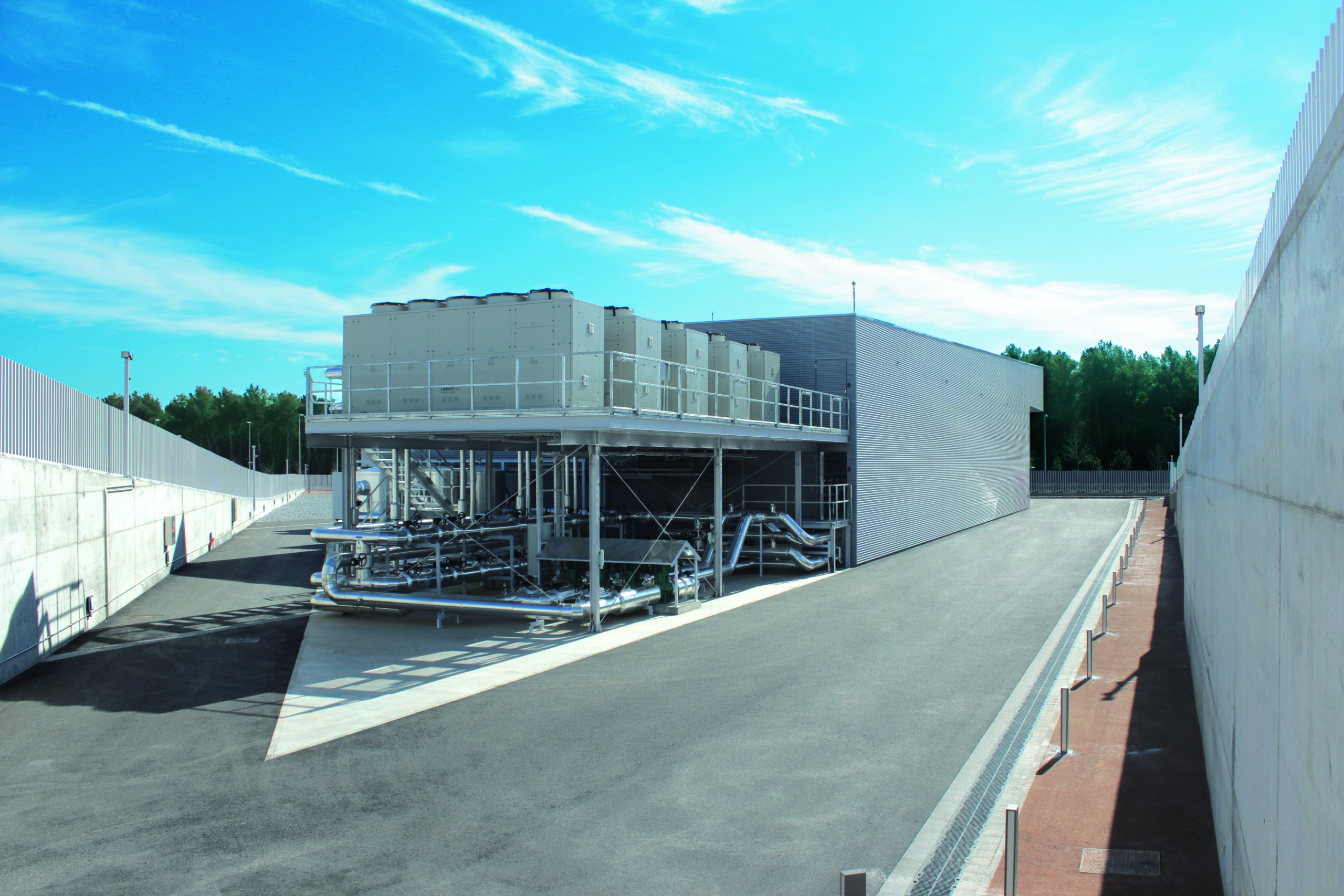Not the biggest, but the fastest. How prefabrication is reshaping the data center race.
Data centers were once seen as nothing more than “four walls and a shell” – borrowing from commercial real estate jargon to describe a weather-tight exterior envelope that keeps the elements out. Building this shell is the easy part. The real challenge lies in the laborious work of fitting out: a sequential process where mechanical, electrical, and plumbing contractors take turns installing their systems.
But as AI transforms the digital landscape and pressure mounts to drastically reduce build times, traditional norms are quickly eroding. The spotlight has shifted from the structure itself to the increasingly complex piping and cabling systems within. How can data center designers adapt a rigid, slow-to-build paradigm for a future where speed is paramount?
The urgency of speed
The data center industry looked to the construction industry for inspiration to reduce build times. For a start, precast concrete panels and modular building components could be manufactured off-site while foundations are being prepared, dramatically shortening the shell phase. This parallel approach has already proven itself in warehouses and commercial buildings, where entire wall sections arrive on trucks ready to be craned into position. Data center operators did this for many years, though the fit-out phase was still manually done and slow.
An attempt to further speed things up came in the form of building data centers into ubiquitous shipping containers, a concept most visibly championed by IO Data Centers. Rather than constructing traditional white space for a data hall, IO developed purpose-built steel modules similar in size to 40-foot shipping containers but engineered specifically for IT equipment. Each module came complete with fire suppression, security, integrated cooling and power systems, ready to be positioned on a concrete pad or within a shell building. Plug in power leads and chilled water, and everything is ready to go.
Unfortunately, the container form factor has several limitations. For one, the steel structure’s tight confines constrained airflow paths and reduced surface area, which restricted workload density. Specifically, the limited space complicated the routing of chilled water pipes to individual racks, while narrow aisles made hardware maintenance slow and difficult. After a few years, IO quietly pivoted back to conventional colocation halls where its conventional solutions fared better. Eventually, the company was carved out and its various assets divested to various parties.
This is not to say that containerized solutions are dead. Today, various equipment vendors continue to make a full range of containerized solutions for niche industries and specialized use cases. These range from edge data center deployments to installations in remote locations that are difficult for traditional construction crews to access.
Assembly in days, not months
As data centers grew bigger, other innovations took place. Equipment makers started redesigning the complex mechanical, electrical, and plumbing (MEP) systems such that they arrive ready to be wired up instead of requiring months of on-site assembly. Power skids and chilled-water plants arrive on-site finished, turning months of field labor into mere days of crane setting. These prefabricated modules also solved the coordination nightmare of having multiple contractors working in the same limited space.
Elsewhere, hyperscalers started to demand standardized designs that could be replicated globally. And they started seeing data centers as products that conform to required specifications, not messy construction projects. This gave rise to reference designs, which are essentially blueprints that can be deployed anywhere with minimal customization.
The final leap follows naturally: Why not prefabricate entire data center modules at the factory? These could be tested before being packaged and shipped complete to their destination. Because these modules are built larger than traditional shipping containers, they avoid the space limitations that plagued earlier containerized solutions. With customers looking to build entire data centers rather than individual components, vendor lock-in becomes less of a concern. Most importantly, everything arrives pre-tested and validated against a reference design, effectively shifting quality control from the chaotic construction site to the controlled factory environment.
Site preparation is crucial here. Foundations must be set properly, utility connections built, and access roads prepared for oversized loads. The modules themselves, some weighing hundreds of tons, must be shipped in and connected in the right sequence. Finally, commissioning teams still need to verify that integrated systems work together as designed, testing failover scenarios and load balancing across the facility.
When approvals unlock speed
Despite the advanced prefabrication techniques today, building a modern data center is a lot more than shipping in prefabricated components and plugging them together like Lego blocks. This is where fast-track access to resources such as power and water can make a big difference.
In countries such as Malaysia, the authorities have established dedicated data center parks with pre-approved power allocations and ready utility connections, allowing operators to bypass years of permitting and infrastructure development. Indeed, Chinese data center operator BrightRay, using prefabricated parts and Johor’s Sedenak Tech Park fast-track approvals managed to build its new data center in just eight months.
For a growing number of data centres, prefabrication has shifted from clever workaround to default strategy. When this production-line approach is paired with policy enablers, multi-year builds collapse to mere months, giving operators the speed edge the AI era demands. In the race to deploy AI infrastructure, the winners won’t be those who build the biggest data centers – but those who build them the fastest.
**This piece first appeared in Issue 10 of W.Media’s Cloud & Datacenters magazine. Click the image below and head to page 12-13 to read the story.



